Cool Waters
Words by Hugh Webster
Images by Mark Hamblin, Tierney Lloyd, James Shooter & Peter Cairns
Words by Hugh Webster
Images by Mark Hamblin, Tierney Lloyd, James Shooter & Peter Cairns
Sean Dugan is a man on a mission: to save Scotland’s salmon – by planting trees. Sean is the Riverwoods officer at the Kyle of Sutherland Fisheries Trust, a partner in a nationwide initiative to restore a network of healthy woodlands along Scotland’s rivers. The aim is to boost biodiversity, enhance flood protection, improve water quality, and – perhaps most pressingly – help cool our overheating rivers.
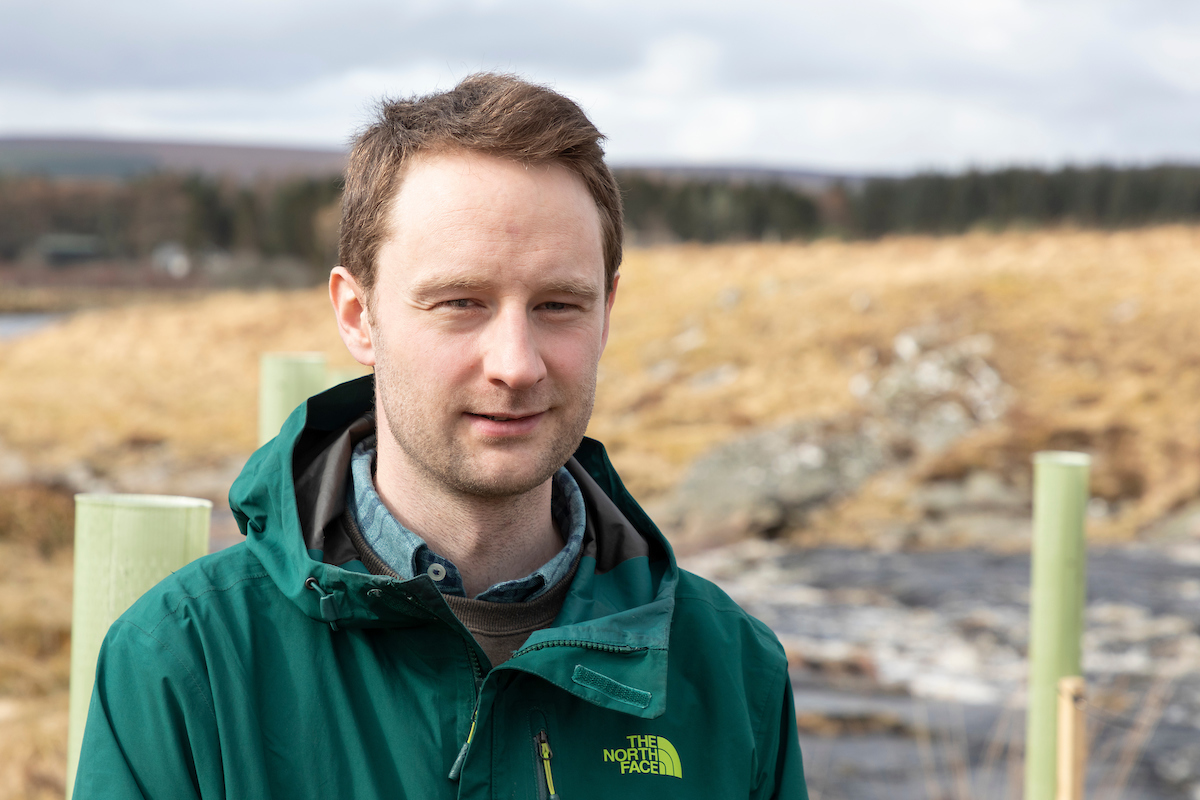
‘River temperatures are rising,’ says Sean, ‘and for cold-water species like Atlantic salmon and brown trout that can cause major problems.’
In 2018, almost 70% of Scotland’s rivers reached temperatures threatening thermal stress and mortality to salmon. This wasn’t a one-off event either. Climatologists tell us that current warming – still only 1.2°C above pre-industrial levels – has already made heatwaves more likely and more extreme. For fish dependent on cold water, the climate emergency isn’t a future threat – it’s here already.
‘We’re looking for shade as quickly as we can possibly get it,’ confirms Neil McInnes, Forestry and Land Scotland’s (FLS) planning forester for Caithness and Sutherland. FLS are key partners within the Kyle Riverwoods Project and the reason for this sense of urgency is simple: warmer water holds less oxygen and, as a result, supports less life. Salmon experience stress at temperatures above 23°C, but a lot of critical invertebrate populations are in trouble long before that – the same invertebrates that young salmon depend on for food.
With river temperatures already being exceeded for key species, the whole food chain is threatened, with potentially far-reaching consequences. ‘We currently have 86 people employed within the salmon and sea trout fishing industry,’ notes Sean. ‘So, if we lose our salmon and sea trout, then the unemployment rate in this area could double.’
The influence of Atlantic salmon far beyond the waterline is felt in other ways too. Swimming up from the sea, migratory salmon introduce key minerals into the nutrient-poor upland catchments in which they spawn, die, decompose, and finally disperse their accumulated elemental wealth. In some healthy North American river woodland, up to 50% of the nitrogen found in the trees can be traced to salmon.
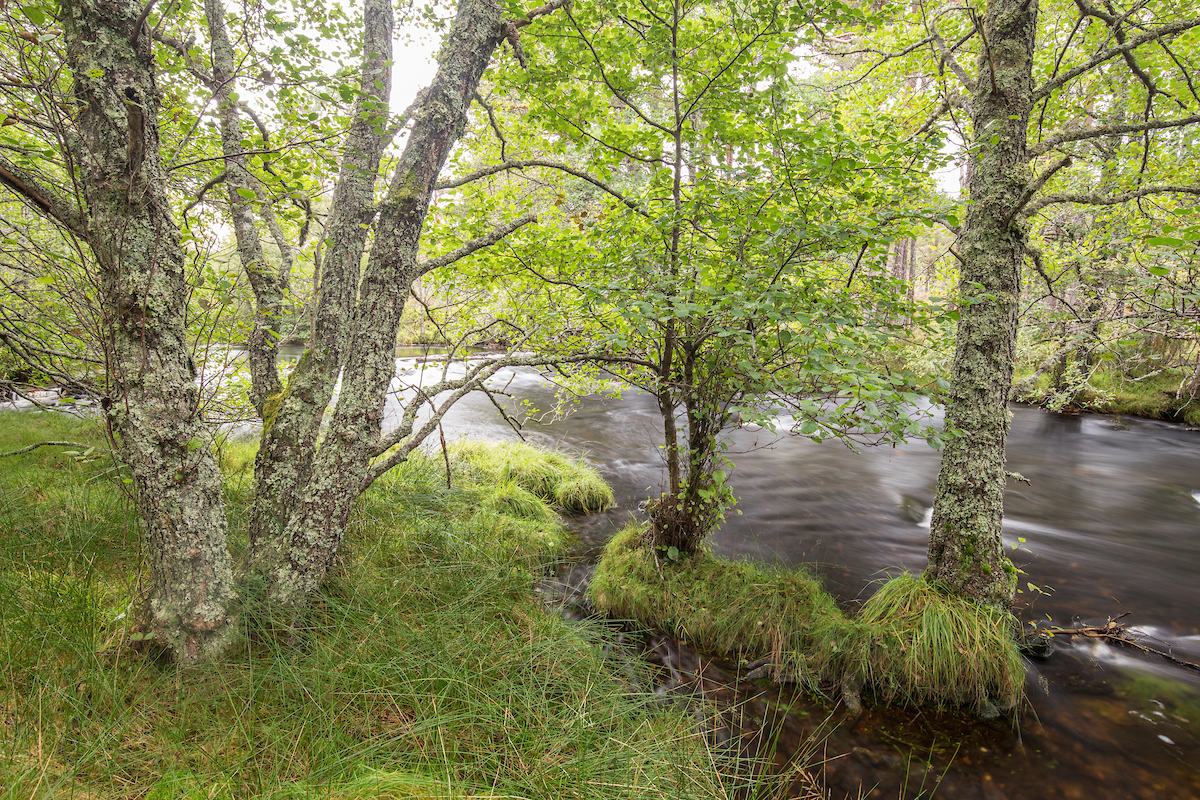
Riparian woodlands provide vital shade to upland rivers and in return, migrating salmon ‘feed’ the forest with minerals brought all the way from the sea.
It’s been a long time since Atlantic salmon pumped such a mass of nutrients into Scottish headwaters, but their ecological importance to the system cannot be overstated. Fortunately, where there has been some historical resistance to increasing tree cover, attitudes are now changing. ‘Landowners understand the climate and biodiversity crises and they want to do the right thing,’ says Sean. ‘Since the launch of the Kyle Riverwoods project last year, we’ve had more than half a dozen landowners come forward, wanting to make things happen.’
With the worst consequences of future warming already baked in, the Riverwoods initiative is pinning its hopes on the cooling effects that riparian trees can generate. In 90% shade, water temperatures can be 3 or 4°C cooler than in direct sun – enough to make a critical difference for heat-sensitive species. Woodlands also create a cooler local microclimate that reduces the indirect heating of the rivers passing through them.
More subtly, riparian woods help to slow the flow of water off surrounding land. During droughts, this keeps rivers deeper for longer, meaning they require more solar energy to warm up. Similarly, trees that fall into rivers create obstacles to the water’s flow, forcing scouring diversions that carve out deeper, and thus colder, channels and pools.
However, re-establishing river woodlands takes time and presents challenges. The Kyle of Sutherland contains over 1,000km of river channels, with almost half this length assessed as being ‘extremely vulnerable to warming’. Typically for the Highlands, Sutherland’s rivers are very prone to flooding, and that creates a problem where getting trees established relies on fencing to keep out sheep and deer. The ideal solution is to move fences back from the water’s edge, limiting livestock access to the riparian zone and reducing deer numbers to a level where they no longer inhibit woodland regeneration but, for this to happen, working with landowners is essential.
Sean’s job often involves conversations about the effects of browsing. ‘Across this catchment less than 3% of the land has native woodland, and many of these wooded fragments cling on along steep gorges where they’ve been free from browsing by sheep and deer,’ says Sean. ‘If we can reduce that wider herbivore pressure then the seed source is enormous, and much of that seed is already right where we want it, in the riverbank.’
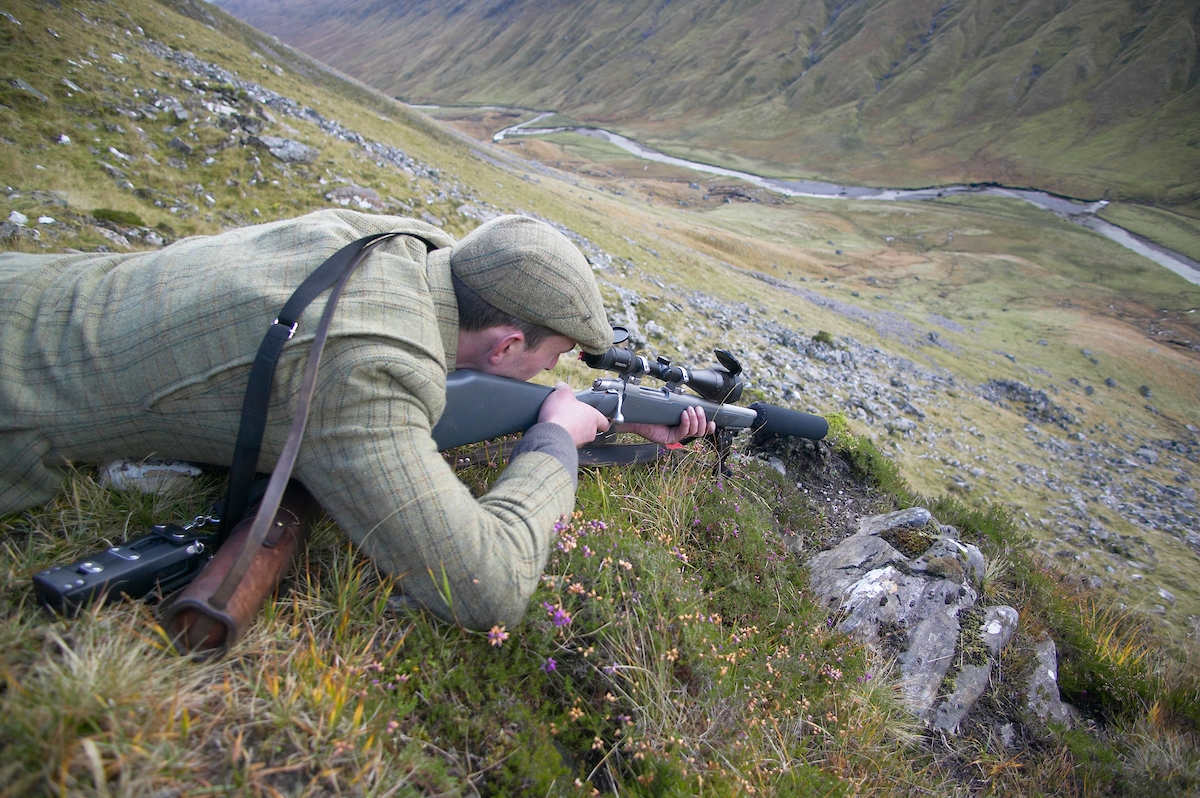
Innes MacNeill, head ranger, Alladale Wilderness Reserve taking aim, Glen More during October hind stalking, Alladale, Scotland.
Despite the challenges, Sean remains optimistic. ‘If you look at the Cairngorms, within five years of addressing overbrowsing, you’re seeing massive results in terms of woodland expansion. So there’s absolutely no reason why we can’t see that up here.’ Indeed, some of the project’s partners have already embraced this philosophy.
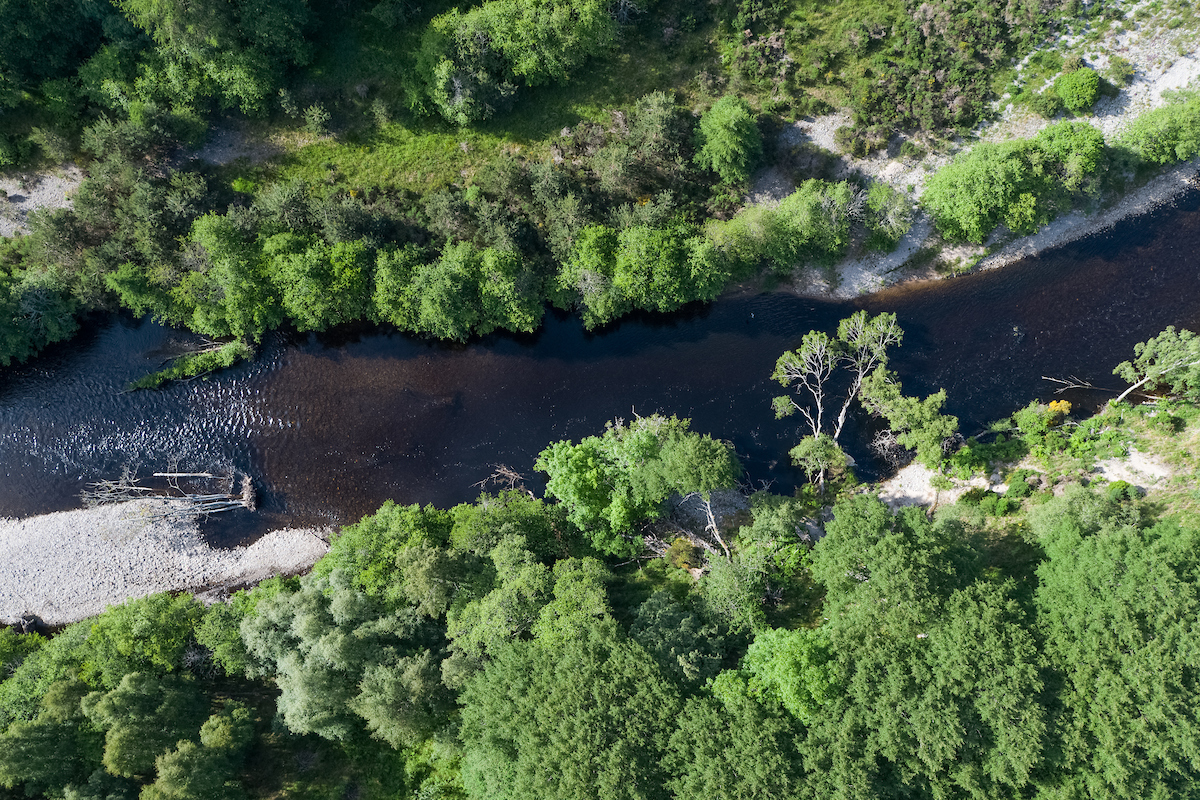
Many stretches of the River Spey and its tributaries, are increasingly shaded by regenerating river woodlands.
Since 2011, FLS has sought to establish a 30-metre zone along all the watercourses within their care, in line with international standards. In Scandinavia and North America, moving productive forestry activities back from the water’s edge is routine practice. ‘It might sound an awful lot,’ says Neil McInnes, ‘but in reality, it’s one tree length.’
FLS vary their approach according to the local context. Where deer numbers are high they rely more heavily on tree tubes to shelter saplings, but they prefer to limit their use. ‘The best place to plant riparian trees is right beside the water,’ says Neil, who has found that species like alder can be planted directly into the banks. ‘They’ve not been fertilised, they’ve not been weeded,’ says Neil, ‘they’re just planted and left, and are flourishing.’
‘We’ve got temperature loggers regularly recording above 26°C and we’ve already seen mass kills of juvenile salmon. If we don’t act now, it will be too late.’
For too long, Scotland’s river catchments have been relentlessly shorn of their tree cover, leaving the land and the rivers poorer, less resilient and more exposed to the heat of the sun. People like Sean and Neil are helping tackle this problem, but Sean offers a stark warning: ‘We’ve got temperature loggers regularly recording above 26°C and we’ve already seen mass kills of juvenile salmon. If we don’t act now, it will be too late.’
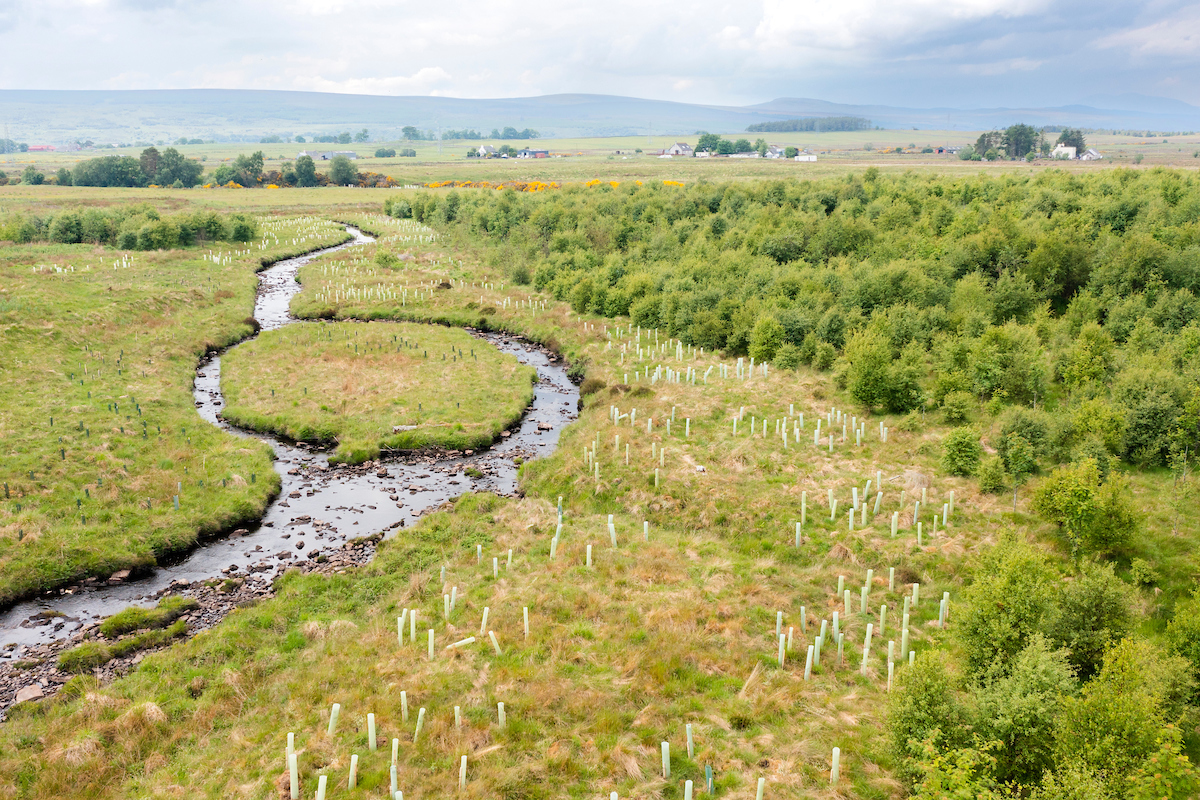
Riparian planting near Lairg, Kyle of Sutherland. Summer 2023.